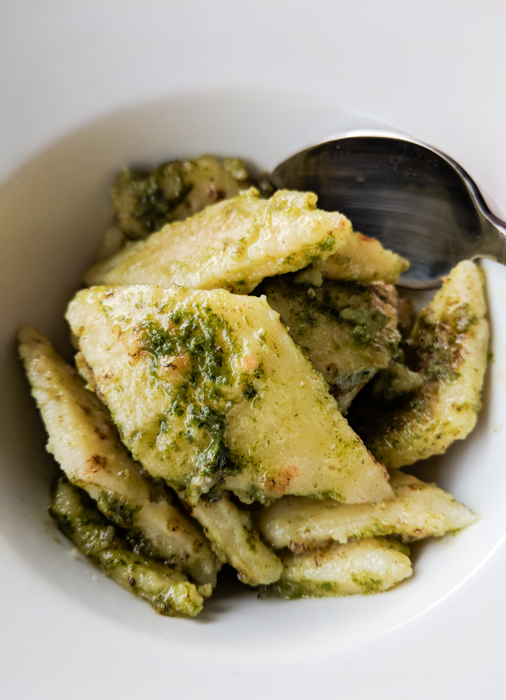 Adventurous clients on our Italiaoutdoors Food and Wine tours in Italy appreciate being introduced to the distinctive regional dishes that are unique to the areas we visit. These are not dishes you will find at Olive Garden, but authentic cuisine that reflect the history of the region. Many of these can be so local that you will only find them in a few small isolated towns, not even on menus across, say, an entire region like Tuscany.
Adventurous clients on our Italiaoutdoors Food and Wine tours in Italy appreciate being introduced to the distinctive regional dishes that are unique to the areas we visit. These are not dishes you will find at Olive Garden, but authentic cuisine that reflect the history of the region. Many of these can be so local that you will only find them in a few small isolated towns, not even on menus across, say, an entire region like Tuscany.
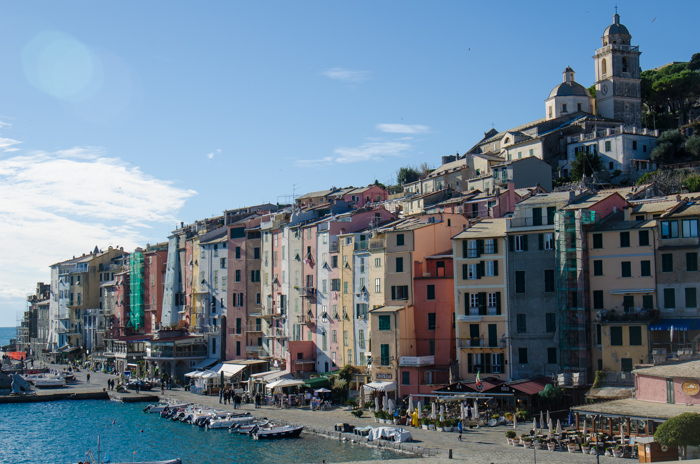
One example of such a dish is testaroli. We sample this on our walking tours to Cinque Terre, Liguria and Tuscany. A specialty pasta of Northern Tuscany, production is centered in the Lunigiana area, around the villages of Pontremoli, Fosdinovo and Castagnetoli. You can find them in shops and restaurants in the province of Massa-Carrara and La Spezia area, which is where I enjoyed it on a visit to Portovenere on the Ligurian coast, the starting point for our walking tours to Cinque Terre. Outside of this limited area, it’s really difficult to find, even in other parts of Tuscany or Liguria.
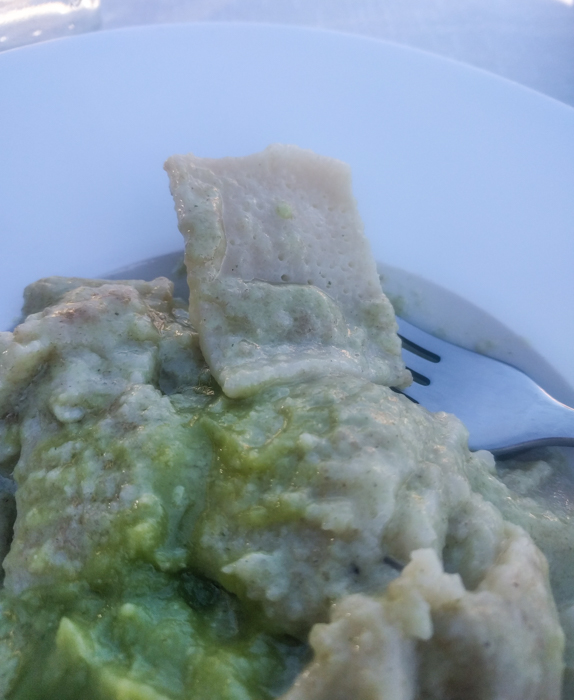
Testaroli is a classic example of “cucina povera”, the food of the peasants, made of simple, inexpensive ingredients. Some claim that they are the first kind of pasta, dating back to Ancient Rome. A testarolo (singular) is a thin, pancake-like disk made from a batter of only flour, warm water and salt. It is cooked on a traditional cast-iron griddle, made of two pieces, called a “testo”. Both pieces are placed on a wood-burning fire until they become red-hot. When the bottom piece, the “sottano”, has reached the right temperature, the batter is poured on to it and it is covered with the “soprano”. When the testarolo is cooked through, the disc is cut into diamond shapes and cooked in boiling water, like pasta, then served with fresh pesto.
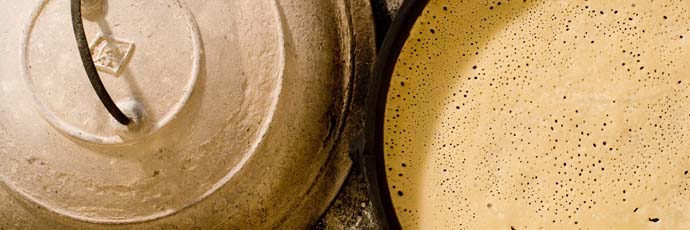
Artisanal testarolo, cooked using these two plates, differs from the more widely available industrial version. The industrial version uses only one steel plate, heated by gas flames, without being covered. The difference is clear: authentic testarolo is full of holes created by water evaporating from the batter, and is thin, soft and light. The industrial version is dense, heavy and thick. The Slow Food Presidium has named the Artisanal Pontremoli Testarolo to it’s official list of Presidia products, in order to preserve this ancient cooking method.
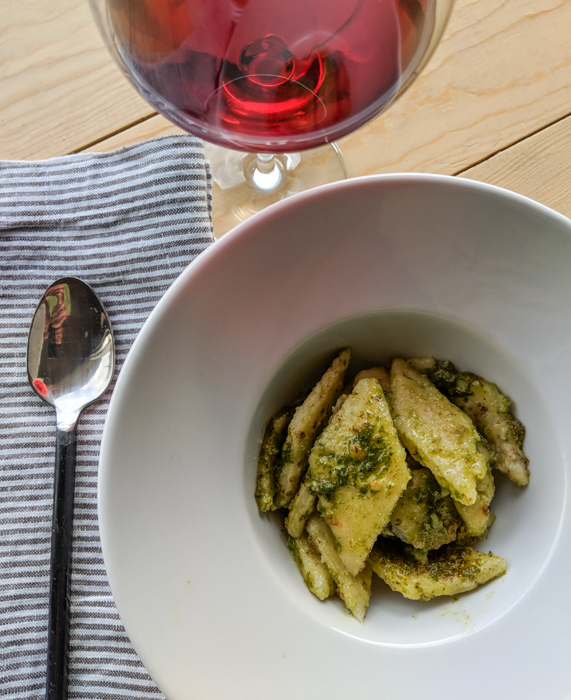
This is basically a crepe batter, cooked, then cut into diamond shapes and boiled like pasta. Enjoy with Pesto alla Genovese (my recipe here), and a nice Ligurian wine like this Ciliegiolo rosé from Bisson. Ciliegiolo is a red wine variety, named after the Italian for ‘cherry’. It is a minor blending component of Chianti, and a relative of Sangiovese.
Testaroli con Pesto alla Genovese
1 1/2 cups all-purpose flour
1 1/2 cups water
1 teaspoon sea salt
Vegetable oil for cooking
1 tbsp toasted pine nuts
Grated Parmigiano Reggiano cheese
Whisk together flour and water and salt. Let sit for 30 minutes at room temperature.
Heat a lightly oiled nonstick or cast-iron frying pan over moderately high heat. When pan is hot, pour in about 1/3 cup of batter. Tilt the pan in all directions so the batter spreads evenly over the bottom. When the crepe is set, flip it over and briefly cook other side. Transfer testarolo to a plate. Continue to cook the remaining testaroli, adding a little more oil to pan if necessary.
Prepare the pesto.
Cut each cooked testaroli into diamond shapes about 1 1/2 inches on each side.
Bring a large pan of water to boil over high heat. Salt the water liberally. Cook the testaroli in the boiling salted water briefly, about 3 minutes. Cook in batches if necessary to avoid crowding. Remove from boiling water.
Place testaroli on warm serving plates, top with Pesto Genovese. Drizzle with some olive oil, and sprinkle some toasted pine nuts and Parmigiano Reggiano cheese. Serve immediately.

Pingback: 6 Unique Dishes to Try in the Cinque Terre Area - Italian at Heart